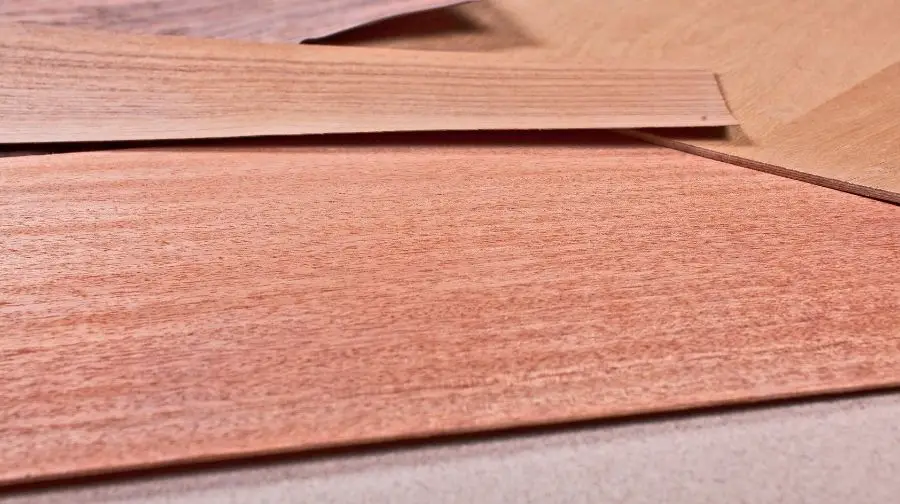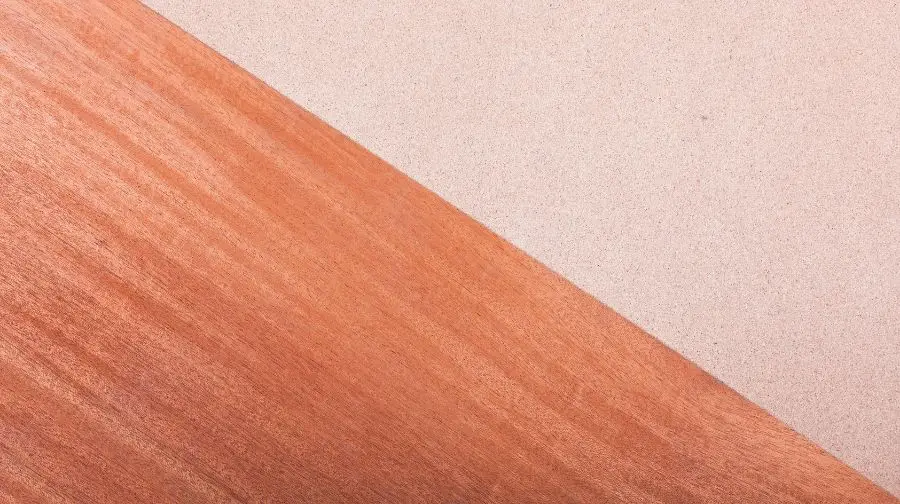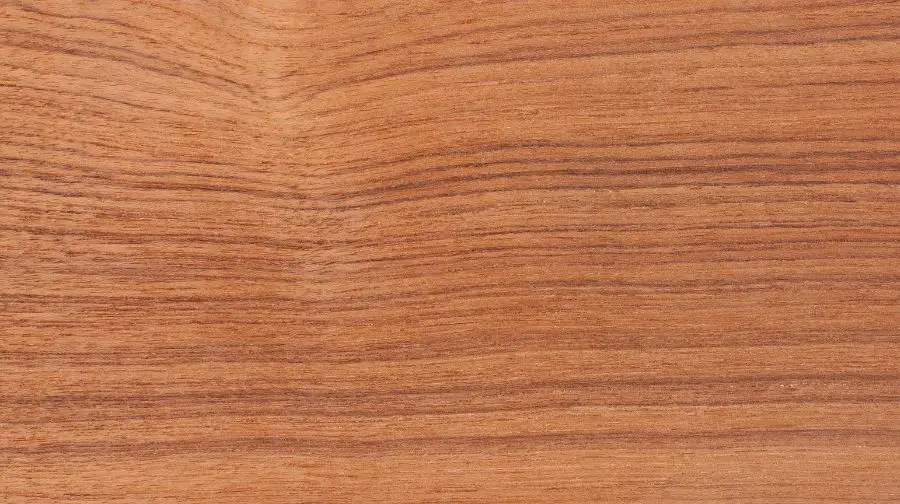
The mahogany veneer is a popular choice for furniture, and it has been used in woodworking since ancient Egyptian times. Mahogany veneers are available in different grades and finishes, making mahogany veneer the perfect material for many furniture styles. They can be found at your local home improvement store or online retailer, but this article will focus on Mahogany veneer that is sourced from sustainable forests.
What is Mahogany Veneer?
Mahogany veneer sheets, plywood, and strips can all be classified as mahogany. However, there are different types of wood which we will discuss later on in this article. Mahoganies wood comes from tropical forests around the world, including South America and Africa. It is a species that is not harvested frequently because it takes up to 30 years for the plant to produce seed.
What is Mahogany Veneer Used For?
The mahogany veneer can be used by homeowners and professionals alike. Since ancient times, it has been a popular choice in woodworking, cabinetry, and furniture making, which makes it an excellent material, especially when you want your work to stand the test of time.
The high density and durability of mahogany make it a great option for flooring, paneling, doors, staircases, wainscoting panels, and custom furniture pieces. The mahogany veneer is also used to create decorative accents such as chair rails or crown moldings.
Mahogany Veneer Sheets
If you go with the grain, a sheet of mahogany veneers is often cut from the outside rings of a log, giving them an even hue throughout. Pure species or ornamental mix designs with many species are available.
Mahogany veneer sheets are used for woodworking projects including cabinet doors. Wainscoting panels, chair rails, and crown moldings can all be made with them. Mahogany sheeting comes in a variety of thicknesses ranging from.040-inch to.250-inch, making it simple to deal with.
Vacuum Bagged Mahogany Veneer with Balsa Core
Subscribe to Explore Composites on Youtube
Mahogany Veneer Plywood
Plywood made from mahogany veneers is typically made of thin sheets or strips that have three to five layers, with each layer being thinner than the one below it. This type of plywood is used by professionals because they can produce custom looks, patterns, and designs using their own techniques.
Plywood made from mahogany veneers is typically used for custom cabinetry, architectural millwork, and furniture pieces. It is an excellent choice to use with other species of wood because it will enhance the overall design you have in mind as well as add a bit more color depth.
Mahogany Veneer Strips
Mahogany veneer strips can be used to add an interesting accent or design element to a project. Strips are sold in various widths and thicknesses, which gives you the ability to work with different material types, strengths, and durability. These strips can also help reduce waste by allowing you to cut them into custom shapes such as ovals or diamonds.
Strips are typically used to create custom furniture pieces, wainscoting panels, and chair rails. They can also be used as decorative accents on staircases, crown moldings, and door casings.

Antique Mahogany Veneers
If you want the look and feel of mahogany but do not necessarily invest in an entire project, antique mahogany veneers might be perfect for what you have in mind.
Antique mahogany veneers can be used to add a rustic or dated look with unique wood grain patterns and color variation that is not found in modern-day species of mahogany such as lauan, meranti, and acajou. These types of antique veneer are typically sold in sheets, but you can also find them in smaller pieces.
Antique mahogany veneers are used to create different types of millwork, such as wainscoting panels, crown moldings, and door casings. They can be cut into strips or custom shapes for accenting stairs, railings, and wood-paneled walls.
Mahogany Veneer 4 X 8
The mahogany veneer can be purchased in different sizes and thicknesses, depending on the type of project you have in mind. The most popular size is typically sold as a full sheet (48-inch x 96-inch).
How to Apply Wood Veneer
Subscribe to Rockler Woodworking and Hardware on Youtube
Types Of Mahogany Veneer
Mahogany veneers are typically sold in full sheets, strips, and pieces.
Sheet of mahogany veneers is typically cut from the outside rings of a log which gives them an even color throughout if you go with the grain. You can find pure species or decorative mix patterns that have multiple species.
- Sheets
Sheet of mahogany veneers is typically cut from the outside rings of a log, giving them an even color throughout if you go with the grain. You can find pure species or decorative mix patterns that have multiple species. Mahogany sheeting is available in a variety of sizes from .040-inch – .250-inch thick, which makes it easy to work with.
- Pieces
Mahogany veneer pieces are typically used to add special design elements, accents, or geometric shapes. You can also use them in between sheets of plywood for an interesting accent around windows and doors where they will be visible from the outside, such as a kitchen cabinet door or bathroom vanity cabinet front.
- Full Sheets
Mahogany veneer sheets are typically sold in four and eight-foot widths. You can use them as-is or cut them to your desired length, depending on the project you have planned. Since they come from a tree trunk, mahogany veneers may have bark around their edges which may need to be removed before applying them. Using a band saw or simply sanding the edges smoothly with an orbital sander, you can do this.
- Pre-glued
If you are looking to apply your mahogany veneer directly onto a project, pre-glued sheets may be the best option for you. These types of sheets typically have adhesive around their entire perimeter, which makes it easy to attach them quickly and evenly. It also reduces the need for additional tools or equipment, which can be beneficial for smaller projects.
Ribbon Mahogany Veneer
Ribbon mahogany veneer is a popular option for many woodworkers and furniture makers. This type of material comes in strips that typically range from .040-inch to .250-inch thick, which makes them easy to cut into custom shapes such as ovals or diamonds.
Red Mahogany Veneer
When it comes to working with veneer, red mahogany is one of the most popular options. It can add warmth and dimension to your project without overpowering it like a solid piece of wood might. Red mahogany also looks great combined with other species such as walnut or maple, which makes it perfect for many pieces, including cabinets, furniture frames, and large molding projects.
How Much Does Mahogany Veneer Cost?
Mahogany veneers are typically sold in full sheets, strips, and pieces. Prices can vary depending on their quality, but you should expect to pay somewhere between $25 – $60 for a sheet of 48-inch x 96-inch mahogany veneer. Pieces and strips will typically be less expensive than a full sheet, but you can expect to pay $20 – $35 for them as well.
Wood Veneer 101
Subscribe to Second Life Design on Youtube
Can You Repair Mahogany Veneer?
Yes, mahogany veneers may require some repairs depending on the type of project you have planned and the damage that has occurred. Because they come from a tree trunk, mahogany veneers may have bark around their edges which you will need to remove by sanding them smooth with an orbital sander before applying them. You can also repair small scratches or dents using wood putty and then sanding the area again after it dries.
Where Does Mahogany Veneer Come From?
Mahogany veneers are typically cut from the outside rings of a log, giving them an even color throughout if you go with the grain. You can find pure species or decorative mix patterns that have multiple species. The most common sources for mahogany include Honduras, Mexico, Brazil, and the Philippines.
Is Mahogany A Hardwood?
Yes! The wood that mahogany veneer comes from is actually classified as hardwood which means it has broad leaves instead of needles like pine trees have. It also grows in tropical climates, so you can expect your finished project to absorb moisture when it is in a high humidity environment.
How To Remove A Stain From Mahogany Veneer?
If your mahogany veneers have become stained, you can remove the old stain by sanding them after applying a deglosser that will help to break down the finish. You may need two coats of wood putty before adding another layer if there are deep scratches or dents.
How To Lighten Mahogany Veneer?
You can lighten mahogany veneers using a chemical stripper that you mix with water and then apply to the surface before scrubbing it clean. You may need several coats of wood putty after sanding if there are deep scratches or gouges that need to be filled in.

How To Repair Mahogany Veneer?
You can repair mahogany veneers using wood putty and a sanding block after applying a deglosser on the surface first to break down the finish. You will want to apply several coats of wood putty with lots of drying time between coats for deep scratches or gouges. After sanding, you can apply a stain and then some coats of polyurethane to protect the project.
How To Fix A Split In Mahogany Veneer?
You can fix splits in mahogany veneers by applying wood glue on both sides before clamping them together until the glue dries. You can also use a metal veneer crack clamping system to hold the pieces together while they dry to help prevent further damage.
RESTORATION/ REPAIR – MAHOGANY VENEERED CARD TABLE
Subscribe to ROSS TAYLOR WOODWORKS on Youtube
Can Mahogany Veneers Be Re-Stained?
Yes, mahogany veneers may be re-stained after you sand them down and apply wood putty. You will want to wait for the putty to dry before sanding again and then applying a stain of your choice, followed by several coats of polyurethane.
Is Veneer Real Wood?
Yes, the veneer is real wood. Veneer refers to a thin layer of fine-grained hardwood that has been sliced into sheets for use in furniture building or other decorative arts where it is usually known by its French name, “veneer.”
Is Veneer Furniture Good Quality?
Yes, the quality depends on the type of wood used. The most popular type of real wood veneers is made from mahogany, maple, and birch trees.
How Thick is a Mahogany Veneer?
A standard thickness for mahogany would be 18mm, but it can range between 15mm-22 mm depending on the quality required by the customer.
Shop Talk: Mahogany Veneers
Subscribe to Rhonda Thornton on Youtube
What to Consider When Buying Mahogany Veneer?
There are a few things to consider when buying mahogany veneer, such as the origin of the wood and whether it is mixed with other species or pure. You should also check for color variations between sheets before you purchase them because they can be different colors if there is bark around their edges from growing on a tree trunk.
- Is Mahogany Veneer the Right Choice for Me?
Mahogany veneers can be used in a variety of applications and are durable enough that they won’t peel or flake off. However, their cost is high when compared to other species because it’s such a sought-after wood type, so you should consider whether mahogany is the right choice for you.
- Does Mahogany Veneer Have Variations in Color?
Mahogany veneers can be different colors on the edges if there is bark around them from growing on a tree trunk. If you are looking for a more uniform color, then it’s best to purchase sheets that have been cut off of trees instead of logs because this will eliminate the bark and give you a more consistent color.
We can conclude that a mahogany veneer is a great option for those with high budgets and looking to add some style to their projects with this expensive type of wood. It can come from multiple sources around the world, which makes it easy to find as well as its durability that doesn’t peel or flake off, making it perfect for various applications.
However, it is important to consider that the color of mahogany veneer will be different around its edges if there are bark remnants because it grew on a tree trunk. The sheets need to have been cut from trees instead of logs for more uniform colors without any bark, so you can bring home some style with this expensive type of wood!



